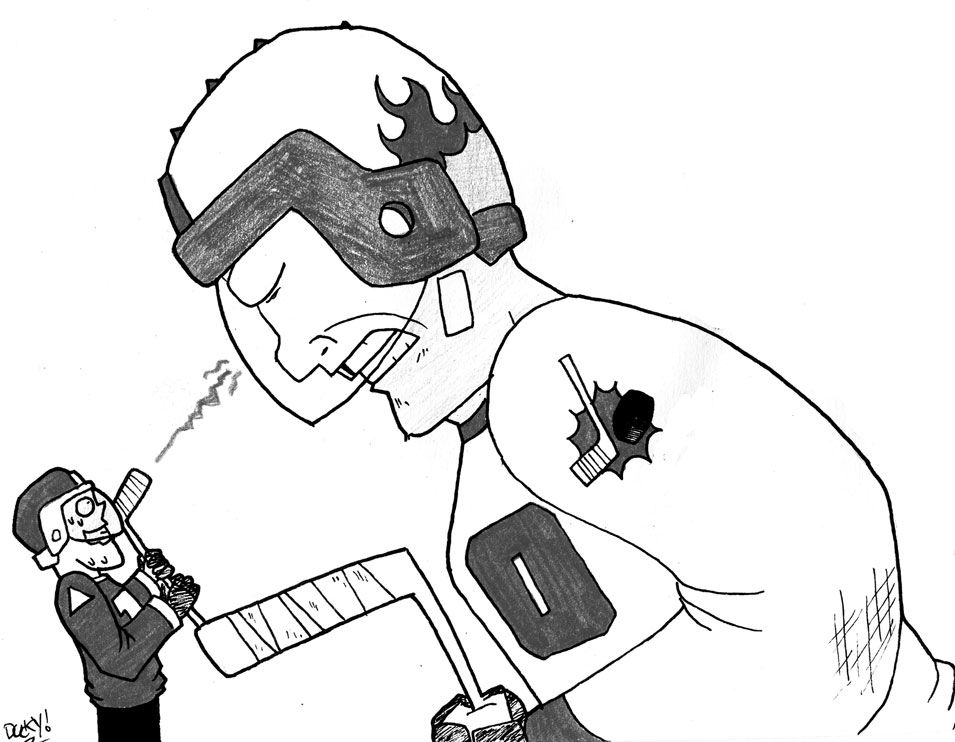
Calling all bullies in Leafs Nation
By Stephane Arnault, October 16 2014 —
The Toronto Maple Leafs, who led the National Hockey League in fighting majors over the last two seasons, have entered the 2014–15 campaign without an undisputed brawler. Big mistake.
Two days before the Leafs’ season opener, the club sent down enforcers Colton Orr and Frazer McLaren to the American Hockey League’s Toronto Marlies.
Dion Phaneuf, the Leafs’ 6’3, 218 lb. defenceman, is far from a realistic substitute. Toronto has invested $49 million in his contract and cannot afford their captain getting injured from a fighting major.
A number of NHL teams have adopted a “no-goon” policy, which has brought up the question: could this be the end of the NHL enforcer?
Seventy per cent of NHL teams have at least one enforcer in their lineup. Although there has been a slight reduction in fighters, they are far from extinct.
Every hockey team needs an enforcer just like every football team needs a kicker. The so-called goon’s only job is to fight, just like a kicker’s only job is to kick. Call them whatever you want, but enforcers’ duties are plain and simple — beat up other players when necessary, which in most cases is to protect their star players and jump in when the game gets ugly.
The NHL has become known for hits from behind, illegal checks to the head and so forth. Last year, 34 players were suspended — in the regular season and the playoffs — because of cheap shots.
Too many NHL players who fill that role believe that they must fight in order to keep their job. Their presence alone assists in keeping the opposing players honest. Players think twice before taking a run at their opponents, knowing they will have to answer the bell and drop their mitts because of their actions. There is no way that an opposing player is going to take a shot at Flames star Sean Monahan if goon Brian McGrattan is on the ice.
Winning a fight changes the momentum of a game. Having enforcers in the NHL gives less skilled players the opportunity to put on an NHL uniform. Fighters are given the chance to make an impact night in and night out.
I grew up in Canada and I love watching a good hockey fight. An enforcer’s victory in a skirmish energizes the building. It also pumps up his team and electrifies fans. I get more excited when two players square off than I do witnessing a dazzling goal.
In addressing the dangers faced by enforcers — concussions, broken noses and head trauma — I chalk them up as occupational hazards.
Those who believe fighting is no longer needed must think again.
What I love most about hockey is that it is one of the only sports in the world where you can stand up for one of your teammates by dropping the gloves and fighting an opponent. Players must be held accountable for their actions.
As for the Leafs, we won’t know for sure whether this surprising no-goon tactic works until Boston Bruins’ Milan Lucic takes a run at a Phil Kessel. Given the history of the league, it’s safe to say the enforcer is here to stay.
